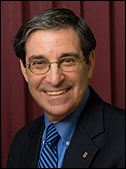From the Editor

Editor, AEE
Senior Associate Dean University of Pittsburgh
shuman@pitt.edu
These eleven papers comprise our 16th issue. With a solid backlog of papers we are now in a position to fulfill our objective of publishing four times per year with ideally ten papers per issue. Including abstracts, we have now had over 850 submissions to AEE. We estimate that approximately 25% of submissions eventually result in published papers. We are able to do this because of the hard work of a dedicated board of associate editors who receive too little credit for their efforts. Mary Besterfield-Sacre, John Chen, Kevin Dahm, Trevor Harding, Gul Kremer, Tom Litzinger, Dan Moore, Tamara Moore, Bill Oakes, Larry Richards, Sheryl Sorby, and BevLee Watford deserve most of the credit for making the process work. They are supported by a large list of reviewers. Even though the entire system is solely dependent on volunteers, we are able to average just over 100 days turn-around time between when the paper is submitted and when the author is notified of a decision.
As AEE matures, we continue to tweak and improve its quality and appeal to the broader engineering education community. While we will also focus on those articles that clearly document an “advance” in engineering education, we have decided to expand our pool of potential articles by expanding our definition to include under “applications” articles that apply the results of rigorous engineering education research in a learning environment. We will also consider a few exemplary articles in which the application may not have been a success, but there is much the engineering and STEM education communities might be able to learn from it. In all cases, the paper must be sufficiently grounded in prior work with a section that summarize the relevant literature. Appropriate methodology and measures should be used to evaluate the “advance” and related research findings. The paper must be well written, and fully cover the topic in an organized manner. Most important, the topic must be relevant and of interest to the broader engineering and/or the STEM education communities, including faculty, researchers, students and administrators.
This issue features eleven papers that cover a wide range of topics….
Table of Contents
- Investigating the Impacts of Design Heuristics on
Idea Initiation and Development
Julia Kramer, Shanna R. Daly, Seda Yilmaz, Colleen M. Seifert, Richard Gonzalez - An Engineering Educator’s Decision Support Tool for Improving
Innovation in Student Design Projects
Nur Ozge Ozaltin, Mary Besterfield-Sacre, Renee M. Clark - Effectiveness of Adaptive Concept Maps for Promoting Conceptual Understanding: Findings from a Design-Based Case Study of a Learner-Centered Tool
Jacob Moore, Christopher B. Williams, Christopher North, Aditya Johri, Marie Paretti - What Do Students Experience as Peer Leaders of Learning Teams?
Erik C. Johnson, Brett A. Robbins, Michael C. Loui - Multidisciplinary “Boot Camp” Training in Cellular Bioengineering to Accelerate Research Immersion for REU Participants
David I. Shreiber, Prabhas V. Moghe, Charles M. Roth - An Evaluation of a Course that Introduces Undergraduate Students to Authentic Aerospace Engineering Research
Dennis McLaughlin, Irene B. Mena, Sven Schmitz - Curricular Improvements Through Computation and Experiment Based Learning Modules
Fazeel Khan, Kumar Singh - Engineering Student Self-Assessment Through Confidence-Based Scoring
Gigi Yuen-Reed, Kyle B. Reed - Introduction of Sustainability Concepts into Industrial
Engineering Education: a Modular Approach
Dima Nazzal, Joseph Zabinski, Alexander Hugar, Debra Reinhart, Waldemar Karwowski, Kaveh Madani - Development And Evaluation of a Mass Conservation Laboratory
Module in a Microfluidics Environment
Andrew C. King, Carlos H. Hidrovo - Research and Assessment of Learning Environments through Photoelicitation: Graduate Student Perceptions of Electronics Manufacturing in India
Catherine G.P. Berdanier, Monica F. Cox